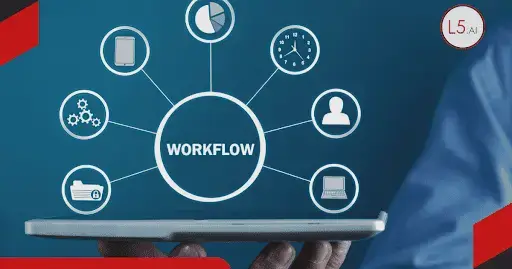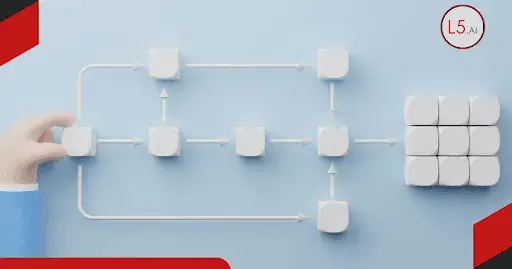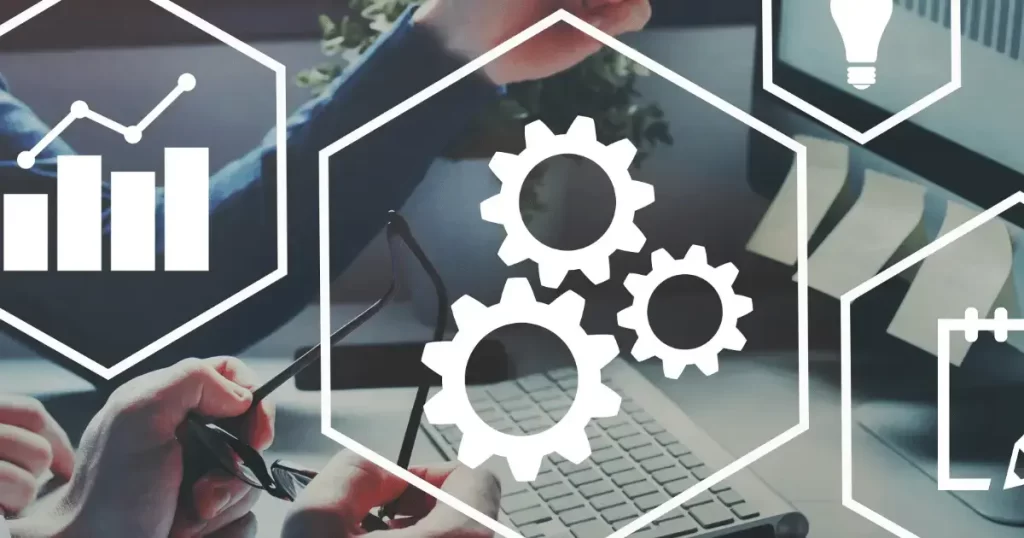Key takeaways
- Implementing a standardized and strategic workflow framework is essential for boosting efficiency.
- Tailor workflows to align with organizational goals, ensuring they adapt to the dynamic business landscape.
- Leverage cutting-edge tools and technologies, such as workflow automation software, to enhance operational processes.
- Integrate technology seamlessly to reduce manual efforts, minimize errors, and accelerate task completion.
- Foster a culture of collaboration by encouraging open communication and information sharing within teams.
- Involve employees in the optimization process, addressing concerns and ensuring a smoother transition to new workflows.
- Implement regular assessments using key performance indicators (KPIs) to measure and analyze workflow efficiency.
- Embrace a culture of continuous improvement, where feedback loops and data-driven insights drive ongoing enhancements.
- Overcoming resistance to change is critical for successful workflow optimization.
- Communicate the benefits of changes, involve employees in decision-making, and provide comprehensive training and support.
- Realize sustainable improvements by integrating feedback into ongoing optimization efforts.
- Scale successful workflow changes across the organization, creating a long-lasting impact on overall operational efficiency.
Benefits of Workflow Optimization

By streamlining processes, tasks can be completed more quickly and with fewer errors. This not only boosts productivity but also enhances customer satisfaction.
Secondly, workflow optimization allows for better resource allocation. By understanding the flow of work and identifying bottlenecks, businesses can allocate resources more effectively. This ensures that each task is assigned to the right person, reducing the chances of delays or duplication of efforts.
Lastly, workflow optimization creates a culture of continuous improvement within the organization.
Importance of Workflow Optimization efficiency:
- Enhanced Productivity: Workflow optimization increases the speed and efficiency of tasks, leading to higher overall productivity within the organization.
- Time and Cost Savings: Streamlined workflows reduce unnecessary delays and resource wastage, resulting in significant time and cost savings.
- Improved Collaboration: Optimized processes facilitate better communication and collaboration among team members, fostering a more cohesive and effective work environment.
- Adaptability to Change: Efficient workflows are more adaptable to changes in the business environment, allowing organizations to stay agile and responsive to market dynamics.
- Boosted Employee Morale: Well-optimized workflows reduce repetitive and mundane tasks, contributing to increased job satisfaction and morale among employees.
- Competitive Advantage: Organizations with streamlined workflows are better positioned to outperform competitors by delivering products or services more efficiently and effectively.
Understanding Your Current Workflow
Before diving into workflow optimization, it is essential to gain a thorough understanding of your current workflow.
This involves analyzing:

- How tasks are currently being performed
- The sequence of activities
- The individuals involved at each stage
Identifying the steps and components of your workflow will provide a clear picture of the existing process.To understand your current workflow, it is helpful to map out the steps visually. This can be done using flowcharts or process diagrams. By visualizing the workflow, you can easily identify any redundancies, bottlenecks, or areas of improvement.
Identifying Bottlenecks and Inefficiencies
Once you have a clear understanding of your current workflow, the next step is to identify bottlenecks and inefficiencies.
Bottlenecks
Bottlenecks are points in the workflow where work slows down or gets delayed, often due to limited resources or dependencies on other tasks.
Inefficiencies
Inefficiencies, on the other hand, refer to unnecessary steps or processes that do not add value to the final outcome.
To identify bottlenecks, analyze each step of your workflow and identify any tasks or processes that cause delays or hinder the flow of work. This could be due to a lack of resources, outdated systems, or dependencies on other teams or individuals. Once bottlenecks are identified, strategies can be developed to address them and ensure a smoother workflow.
Similarly, inefficiencies can be identified by scrutinizing each step of the workflow and questioning the necessity of each task. Look for any redundant or repetitive processes that can be eliminated or streamlined. By removing inefficiencies, you can save time and resources, ultimately improving productivity.
Productivity Tips for Efficient Work

- Prioritize tasks: Start each day by identifying the most important tasks that need to be completed. Prioritize them based on urgency and importance, and tackle them first.
- Break tasks into smaller chunks: Large tasks can be overwhelming and lead to procrastination. Break them down into smaller, more manageable tasks to make progress more achievable.
- Avoid multitasking: Contrary to popular belief, multitasking can actually decrease productivity. Focus on one task at a time to ensure quality work and minimize distractions.
- Take regular breaks: Taking short breaks throughout the day can help refresh your mind and prevent burnout. Use this time to stretch, meditate, or engage in activities that relax you.
- Delegate when possible: If you have a team, delegate tasks that can be handled by others. This allows you to focus on more critical responsibilities and promotes a sense of shared responsibility.
Implementing Work Efficiency Strategies

- Automation: Identify tasks that can be automated using software or tools. This can save time and reduce the chances of human error.
- Standardize processes: Develop standardized procedures and guidelines for recurring tasks. This ensures consistency and eliminates the need for unnecessary decision-making.
- Collaborative tools: Implement collaboration tools that facilitate communication and streamline teamwork. This ensures that everyone is on the same page and reduces the chances of miscommunication or duplication of efforts.
- Continuous improvement: Encourage a culture of continuous improvement within the organization. Regularly review and evaluate your workflow to identify areas for further optimization.
Tools and Technologies for Workflow Optimization

- Project management software: Project management software allows you to plan, manage, and track tasks and projects in a centralized platform. It provides visibility into project progress, facilitates collaboration, and helps in resource allocation.
- Workflow automation tools: Workflow automation tools automate repetitive tasks, reducing manual effort and the chances of errors. These tools can streamline approval processes, data entry, and document management.
- Communication and collaboration tools: Tools like Slack, Microsoft Teams, or Google Workspace facilitate real-time communication, file sharing, and collaborative work. These tools enable teams to work seamlessly, regardless of their location.
- Performance analytics tools: Performance analytics tools provide insights into workflow efficiency and identify areas for improvement. These tools track key performance metrics and generate reports to help you make data-driven decisions.
Creating a Comprehensive Workflow Guide

It should serve as a reference point for employees and provide clarity on how work should be done. The workflow guide should be easily accessible to all employees and regularly updated to reflect any changes or improvements. By having a comprehensive workflow guide, you can ensure consistency, reduce the chances of errors, and facilitate employee training and onboarding.
Conclusion: Finding Clarity in the Maze
- Regularly reviews of your workflows
- Adapt to changing business needs according to the trends in the market



